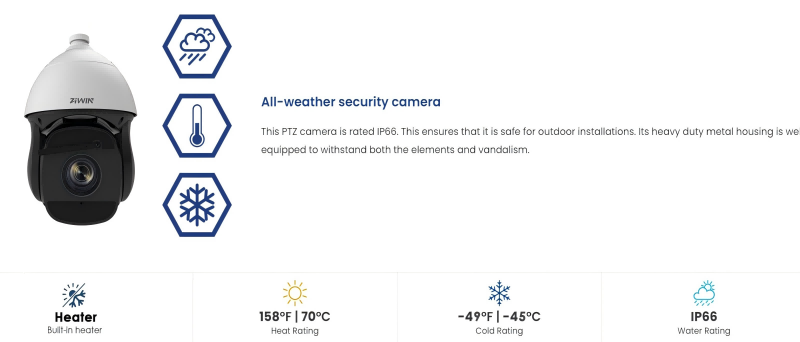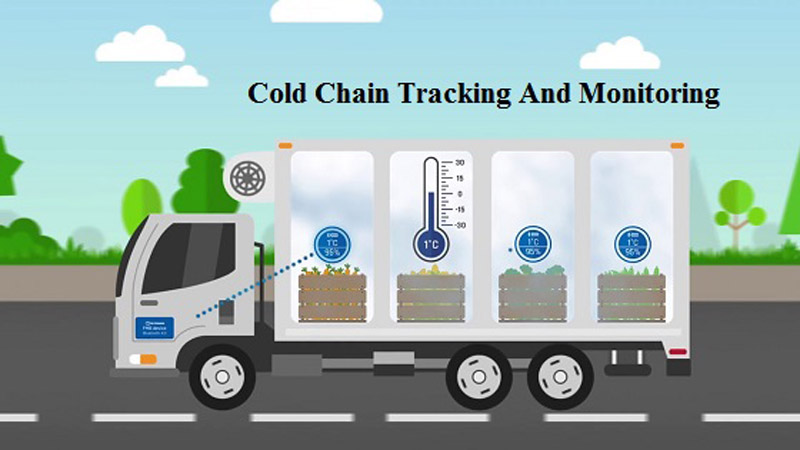
In video surveillance systems, low-temperature-resistant cameras are often used in scenarios that require working in extremely low-temperature environments. These scenarios mainly include the following:
Outdoor monitoring in severe winter areas. In some areas with extremely low temperatures in winter, such as northern alpine areas, mountains, and some polar environments, temperatures often drop to dozens of degrees below zero. Ordinary cameras may not work properly or have a greatly shortened lifespan in such a low temperature environment, so specially designed low temperature resistant cameras are required. These cameras can maintain normal operation in extremely low temperatures, providing clear and stable surveillance images.

Cold chain logistics monitoring. Cold chain logistics involves the transportation and storage of refrigerated and frozen food, often at very low temperatures. In order to ensure food safety and the controllability of the logistics process, low-temperature-resistant cameras need to be installed in cold chain transportation vehicles, cold storage, refrigerated warehouses and other environments. These cameras can provide continuous monitoring under low temperature conditions, helping managers monitor the status of goods in real time and prevent food from deteriorating due to temperature abnormalities.
Ice and snow sports venues. Ice and snow sports venues such as ski resorts, ice hockey arenas, and ice sculpture display areas are also application scenarios for low-temperature cameras. These venues not only have low temperatures, but also have high environmental humidity, which requires high anti-freeze, anti-fog, and waterproof performance of monitoring equipment. Low-temperature-resistant cameras can work stably for a long time in low-temperature and high-humidity environments, ensuring safety inside and outside the venue.
High Altitude Area. At high altitudes, temperatures are usually lower and temperature differences are larger. Monitoring equipment installed in these areas needs to be able to adapt to low temperatures and complex climatic conditions. Low-temperature-resistant cameras can provide reliable monitoring services in such environments and help with the safety management of local infrastructure and personnel.
Ocean polar exploration. When conducting polar ocean exploration, ships and exploration equipment will enter extremely cold areas, such as Antarctic and Arctic waters. Cameras used in these environments require low-temperature resistance to ensure continuous operation in harsh climate conditions, record scientific data and monitor detection processes.
By using ZIWIN's low-temperature-resistant cameras -45℃~+70℃ (-49℉~+158℉) in these scenarios, it can be ensured that the video surveillance system can still operate stably and reliably under extreme low temperature conditions, providing high-quality Monitor images and data to provide strong support for security management and operations.